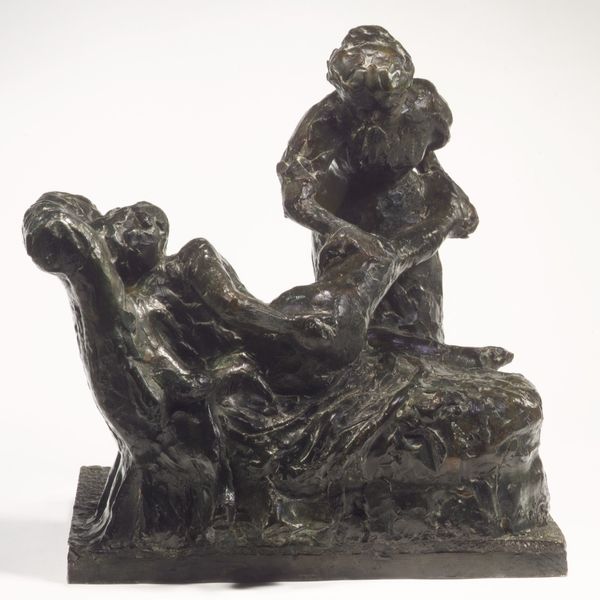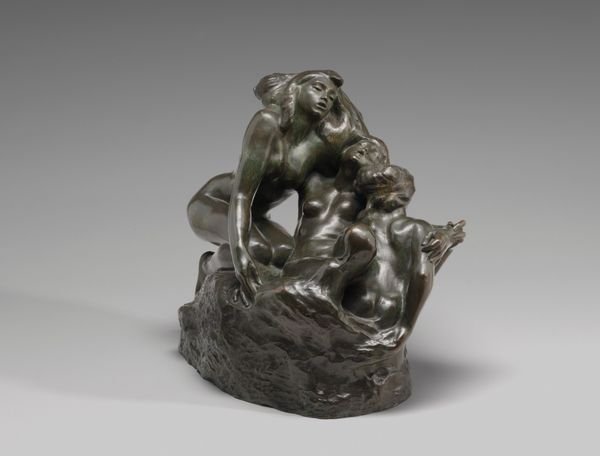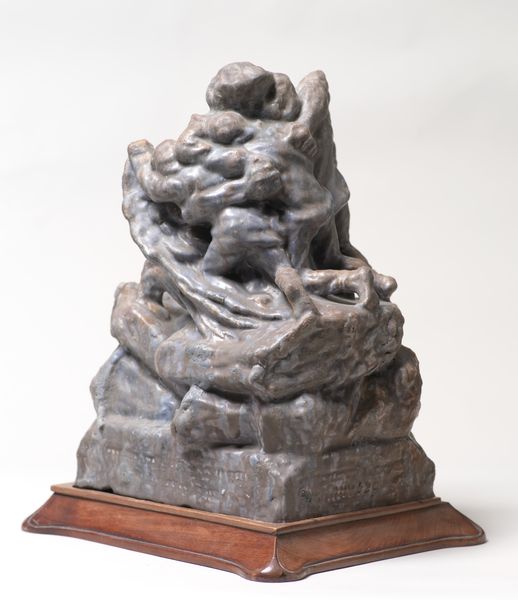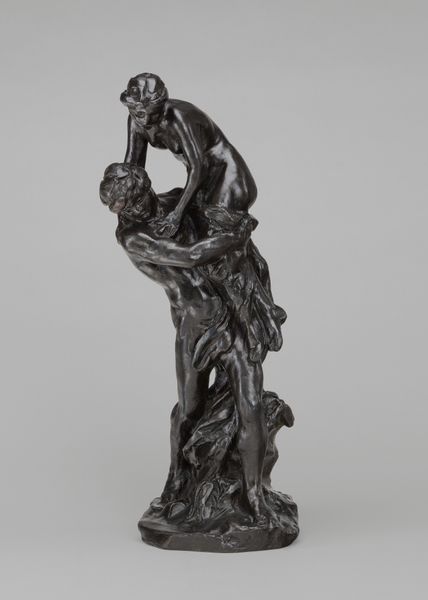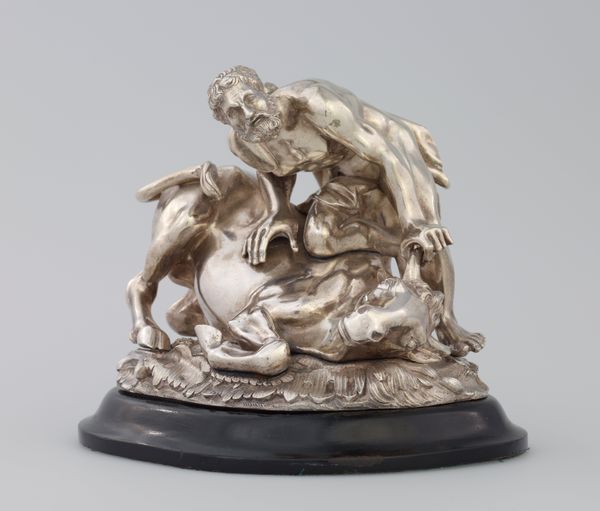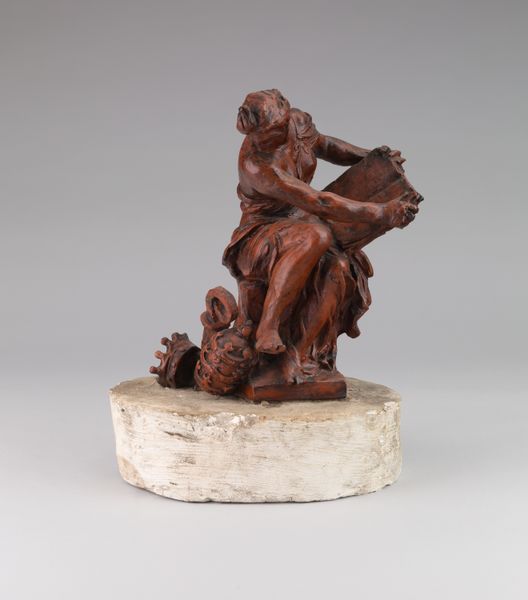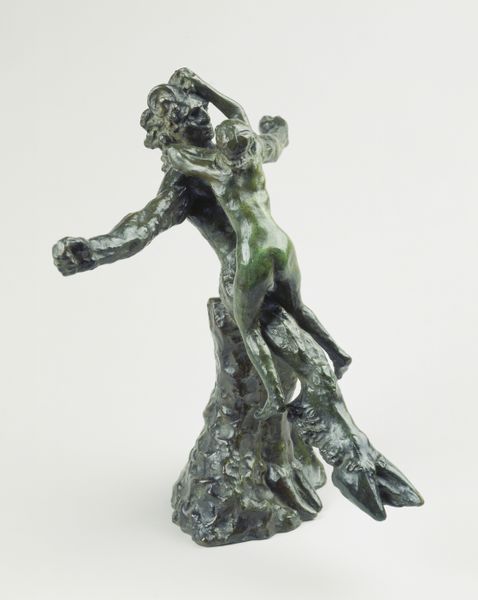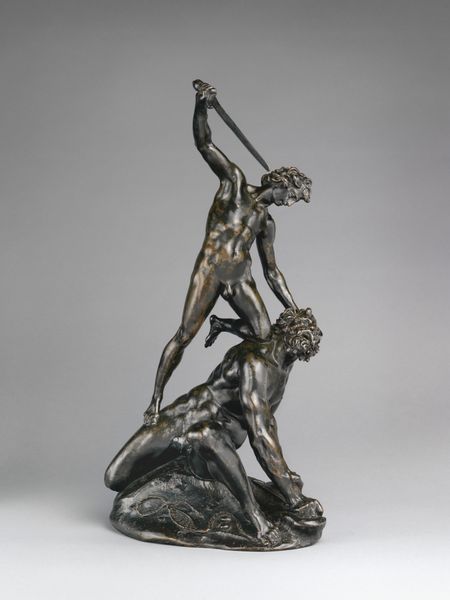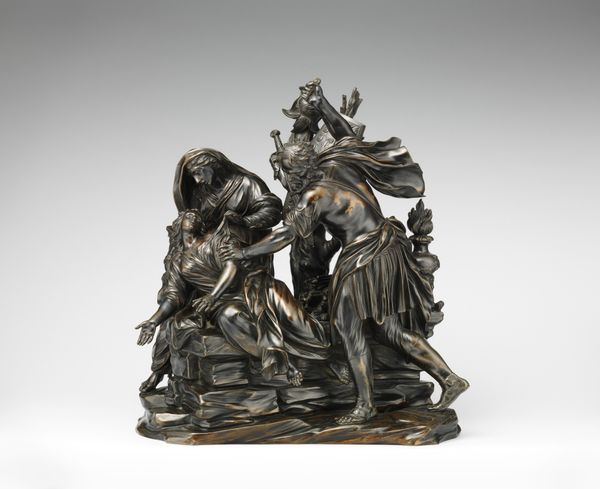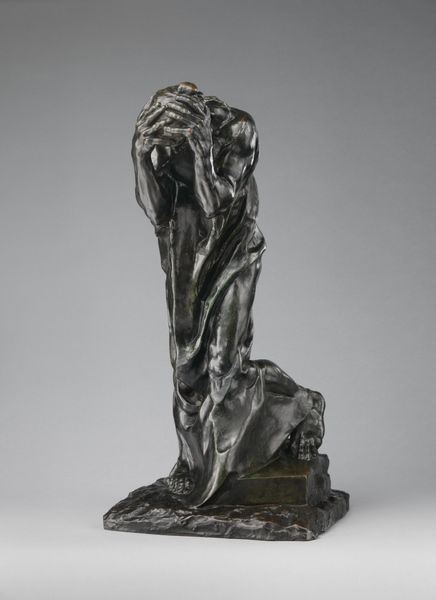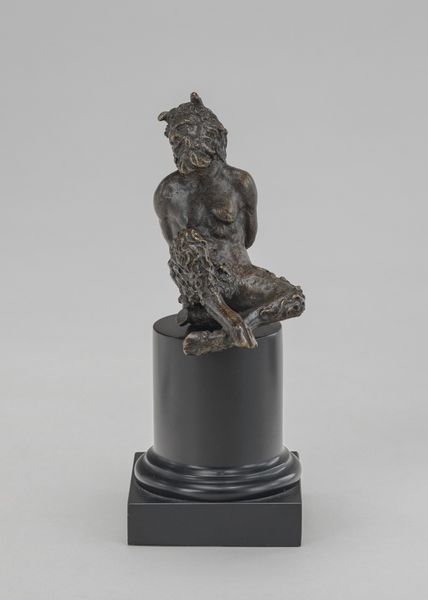
bronze, sculpture
#
sculpture
#
classical-realism
#
bronze
#
figuration
#
sculpture
#
france
#
history-painting
#
academic-art
Dimensions: H. 17.8 cm (7 in.)
Copyright: Public Domain
Editor: This is Aimé-Jules Dalou’s bronze sculpture, *Bacchus Consoling Ariadne*, dating around 1892 to 1907. It's quite moving. The way Bacchus supports Ariadne suggests deep compassion. How do you interpret the symbolic relationship here? Curator: It’s a potent image of emotional transformation. Ariadne, abandoned, embodies despair, yet Bacchus offers a path toward ecstasy. Think of the cultural memory associated with wine, revelry, and theatrical catharsis – all under Bacchus's aegis. Note the sculptural embrace, a merging of figures signifying psychological rebirth, a journey from personal grief to communal joy. Doesn't it speak of shared experiences and human connection, not just individual emotion? Editor: I see your point about the "shared experiences" aspect, but how does Dalou visually signal this communal aspect? It seems so focused on the two figures. Curator: Precisely in that intimate exchange! Dalou suggests transformation through connection. Ariadne isn't merely comforted; she’s initiated into a Bacchic state. Their intertwined forms become a single unit, promising liberation from sorrow through ecstatic ritual, a vital social function in antiquity and even today. The shared understanding without any need of a verbal acknowledgement signifies emotional depth and cultural resonance. Editor: So, it’s not just comfort but also transformation offered via a broader cultural lens? Curator: Exactly. The sculpture asks us: what cultural rituals or shared experiences help us transition from states of personal anguish towards healing and perhaps even joy? How do we rewrite our stories? Editor: This is really insightful, a profound message expressed through these mythological figures! Curator: Indeed. Art unlocks dialogues not just with the piece itself but with enduring human questions.
Comments
No comments
Be the first to comment and join the conversation on the ultimate creative platform.
